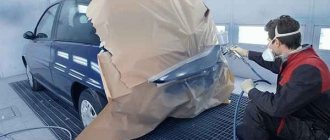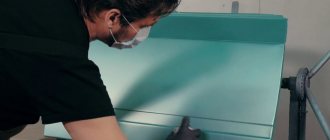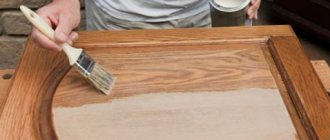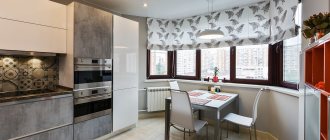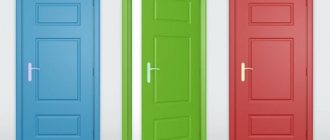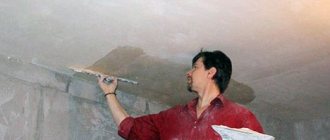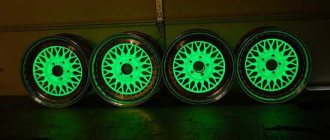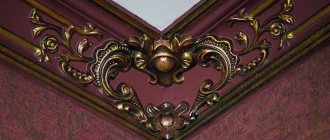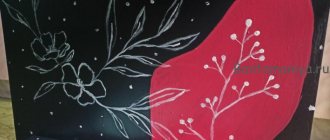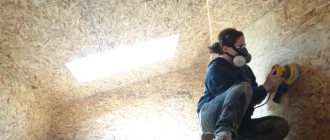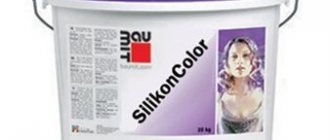Repainting a car body is an expensive pleasure associated with financial and time costs. A thoughtful approach will help you avoid serious problems and disappointments. This work should only be trusted to professionals. Otherwise, it is unlikely that unwanted effects will be avoided. Even an experienced specialist can make mistakes; for novice craftsmen, the likelihood of defects is much higher.
One of the most common flaws when painting a body is the appearance of so-called shagreen.
What is shagreen on a car
Shagreen is a defect in the paintwork. It is expressed in the unevenness of the covering layer. Visually resembles an orange peel. The degree of manifestation of irregularities varies from a fraction of a millimeter (relatively small) to a centimeter (large). Shagreen is present on all surfaces coated with priming, coloring and polishing substances. Whether it's a wall or a car body. However, with high-quality work, unevenness is visually invisible, the surface looks uniform and smooth.
Shagreen is a common paint defect.
Description
The photo shows a large shagreen on the facade of the house.
The depth of the plaster relief largely depends on the method of application and the composition of the mixture used.
Acrylic decorative coating “Puffas textur farbe”
Shagreen plastering can be done using almost any façade and interior plaster.
The composition may be:
- mineral: gypsum or cement-sand mixtures, sold dry in 25-30 kg bags, mixed with water;
- polymer plasters ready for application in buckets (acrylic, silicone, latex, etc.). They may contain fine stone chips or sand as filler.
Expert opinion Alexander Guryanov Plasterer and master of decorative finishing
I would like to immediately draw your attention to the coloring of the plaster. Polymer compositions can be tinted in bulk with any water-based colors
Mineral mixtures can also be tinted, but this is not as effective, so they are additionally painted after drying.
Areas of application of decorative plaster Shagreen:
- interior decoration of ceilings and walls in residential apartments and houses;
- finishing of entrances and inter-apartment corridors, staircases;
- visual alignment of walls in old houses;
- exterior decoration of houses and facades;
- design of retail, industrial and office facilities.
This is a practical solution for rooms with high operational load - scratches and minor damage will not be noticeable if you use a mixture with color.
Mechanical application creates a finer texture
The advantages of the mixture include its following qualities:
- ease of application;
- the possibility of finishing without the use of specialized equipment;
- the ability to visually align walls;
- filling or masking minor surface defects;
- relatively low cost (when using cement or gypsum dry mixtures).
The material has no significant disadvantages, but there are features that should be taken into account when choosing a finish:
- difficulties in care due to the relief texture;
- when used externally, it accumulates dust over time, losing its decorative qualities;
- not the most beautiful option for decorative interior decoration.
In general, shagreen plaster is a simple, but practical, durable and inexpensive coating for the walls of houses and non-residential buildings.
Reasons for appearance
High-quality car painting is a labor-intensive multi-stage process that requires certain knowledge and skills. It is also worth understanding that shagreen when painting a car appears when microscopic drops of paint do not merge into an even layer, but form an uneven, as if rough surface.
The following factors contribute to the appearance of gross flaws on the painted surface of the body:
Illiterate selection of coating components:
- the use of low-quality materials (it will be almost impossible to correct the resulting defect);
- unbalanced paint consistency (will lead to drips, drops, lumps of paint);
- the chemical conflict of the compositions used for priming and painting will make the coating not only uneven, but also short-lived.
Using unsuitable equipment and tools:
- untimely washing or incorrectly adjusted spray gun is the cause of uneven spraying;
- low or excessively high compressor pressure.
Carrying out work in unsuitable conditions:
- non-compliance with temperature and humidity conditions;
- dirty and dusty room (ideally, painting should be done in a special chamber).
The use of low-quality materials contributes to the appearance of gross flaws during painting.
Violation of painting technology:
- poor quality of surface preparation before painting;
- inaccurate adherence to execution steps;
- non-compliance with the drying time of layers;
- incorrectly selected distance between the gun and the surface being treated;
- inaccurate hand manipulations.
Some types of tanning
- Aluminum tanning
- used in the manufacture of husky, for treating chrome/tannin tanned leathers to increase their fullness. The simultaneous use of aluminum and organic tanning agents is possible. - Tanning with iron compounds
is practically not used due to the properties of ferric iron to catalyze the destruction of collagen. - Vegetable (tannin) tanning
– The tanning process uses oak bark (hence “tanning”) and other ingredients obtained from plants, tree bark and similar sources.
The result is a brown elastic material. The desired shade is achieved by varying the quantity and quality of the ingredients used and selecting the color of the raw materials. Vegetable tanned leather is not water resistant. When exposed to moisture, it changes color, and if it absorbs liquid and then dries, it will shrink in size ( shrink
) and harden, becoming less elastic.
In hot water, this type of leather shrinks
and becomes a hard, brittle material, which limits the possibility of its use. - Titanium tanning
does not stain the bakhtarma - Chrome tanning
- the softness and elasticity of chrome tanned leather is higher than that of tannin tanned leather. More resistant to high temperatures. In humid conditions they get wet faster and dry out slower. Chrome tanning agent colors bakhtarma gray-green. - Zirconium Tanned
- Zirconium tanned leathers have good strength and abrasion resistance. Zirconium tanning agent does not color bakhtarma.
How to eliminate this defect from a car
It is not easy to eliminate shagreen that appears when painting a car, so it is worth preparing everything for polishing the car in advance. In general, the technology is reminiscent of eliminating chips and other defects on a car. However, each individual case requires its own approach.
In practice, the following methods are usually used:
Removing imperfections by polishing:
- wait until the paint layer hardens properly (about a day after painting);
- matte the problem area of the body using sandpaper (sandpaper) with a fine fraction for fine grinding of metal (grit value about 1500);
- matting technology using abrasive paper can be replaced by washing the top layer;
- apply polishing paste to the damaged area;
- polish the surface with a machine using a soft felt wheel;
- repeat the treatment of the area several times;
- remove traces of paste;
- evaluate the result.
It’s not easy to eliminate shagreen on a car
Removing “orange peel” by local or partial repainting (used in cases of very low quality painting, when polishing work is ineffective):
- wash the enamel layer down to the primer in the damaged area, avoiding any remaining paint;
- determine the quality of the soil, if necessary, washing it down to the metal itself;
- carry out metal processing to prevent the occurrence of defects;
- cover the area with a layer of soil, wash its surface, achieving maximum smoothness;
- after waiting for the soil to completely harden, re-paint the surface to be treated with high-quality paint of the desired color;
- after the enamel has dried, thoroughly polish the paintwork;
- evaluate the result.
In both cases, with an unprofessional approach, there is a possibility of getting noticeable stains on the local painting site against the background of the old coating. You should also be more responsible when choosing a professional to paint your car.
Cutting raw materials and finished leathers
In production, leather is cut and has various configurations. This is determined by the size of the hide and the range of finished leathers.
- Whole skin.
- Half-skin - half of the skin, cut along the spine line.
- Kulat is a skin with a cut off collar.
- The collar is a part of the skin from the neck part, usually has many defects.
- The saddle cloth is the most valuable part of the skin - the dorsal part, which does not have a floor and a collar. It can make up up to 55% by area of the entire skin area. Can be divided into “upper saddlecloth” and “lower saddlecloth”. Typically used for the production of belts, bags and other products requiring high density raw materials.
- Krupon is a saddle cloth cut in the shape of a rectangle.
Areas of the skin with the most defects:
- Paws.
- Pola is part of the skin from the peritoneum.
- Flanks are areas of skin adjacent to the paws on the ventral side.
Horse hide is divided into the following sections:
- Khaz - the back part of the skin (croup and legs).
- Spiegel - thickened areas of skin located above the articulation of the pelvis and thigh bones. Khaza plot.
- The front is leather without haz. The most valuable part.
How to avoid shagreen when painting a car
To obtain a high-quality, durable car coating and avoid the appearance of orange peel after painting, the following components are required:
- quality materials;
- good equipment and tools;
- suitable premises;
- knowledge and adherence to dyeing technology.
Quality materials needed to avoid orange peel
Preparing for work
Before starting work you must:
- Carefully prepare the surface to be treated.
- Select paint materials and other components:
- primer;
- paint;
- varnish;
- solvent.
It is desirable that all components be from the same manufacturer and be part of the same series. Incompatibility of even one layer with others will lead not only to shagreen, but also to the fragility of the coating. The correct choice of paints deserves attention; modern technology using powder paints has proven itself to be especially effective.
Find quality equipment and tools:
- spray gun with good and uniform spraying, thoroughly washed (adjust each time before painting);
- compressor with a uniform air supply, without foreign inclusions (dust, lubricants, condensate);
- sandpaper, polishing machine.
Before starting work, you need to choose the right paints
Create suitable conditions:
- ensure the room temperature is about 20-22 degrees (temperature conditions affect the consistency of the paint);
- exclude dust;
- humidify the air.
Coating technology
In most cases, shagreen is formed during the process of applying materials to the surface. If a defect appears even on one of the layers, the aesthetics of the entire area will suffer. To obtain a high-quality coating, it is necessary that even the soil “lay down” well.
Main stages of work:
- Determine the initial hardening time of the paint (information should be indicated on the packaging). Modern materials are often produced with a hardener. If the hardening process begins already in the spray gun, the paint will not be liquid enough on the surface, leading to the appearance of shagreen.
- Mix the components, choosing the correct consistency of paint in relation to the solvent (individual selection is recommended, based on the ratio indicated on the package).
- Apply the resulting composition to the surface (it is advisable for beginners to practice on other objects). When working, it is necessary to take into account the paint supply speed of the spray gun and the distance to the surface of the body. At a long distance, the likelihood of getting shagreen increases, and at a short distance – smudges. It is necessary to find a compromise solution by doing a test staining.
Important! Mix the composition and apply it to the surface in a time approximately equal to half the hardening time.
Dressing methods
During dressing, various types of leather (as well as fur) are obtained, which can be divided into three parts: raw leather, rawhide and tanned leather.
Fresh (steamed) skin is flexible due to the fact that its collagen fibers are not glued together. Dried skin becomes hard or brittle because these fibers stick together into a solid mass and lose their mobility. Thus, to prepare leather, it is necessary to introduce into its dermis a substance that would separate the fibers from each other. When tanning, such substances are tanning agents that are capable of creating chemical bonds between fibers, but at the same time preventing them from becoming soggy and sticking together. Other processing methods may use some kind of fat: it will also prevent the fibers from sticking to each other (rawhide).
Despite the differences in processing methods for obtaining different types of final products, there are common required steps. The first universal operation is fleshing, in which the skin is deprived of the remains of meat, fat and subcutaneous fat. Then, if required, dehairing or liming is carried out, removing hair and epidermis. The resulting product is called golyom. At this stage, you can stop and get the so-called raw leather or go further along the path of rawhide or tanned leather. There are now a large number of species of the latter. Accordingly, there are also many recipes for dressing.
Skin structure
In the skin of an animal there are three layers (not counting the hair), which are either transformed or removed during the dressing process.
- The upper, epidermis (skin) is the outer layer consisting of squamous epithelium. Constitutes from 2 to 5% of the thickness of the skin.
- The middle layer, the dermis, is the main layer formed by protein collagen fibers. Divided into:
- The papillary layer is a layer penetrated by hair canals. In some types of leather (goatskin, sheepskin) it is the main material for dressing.
- Reticular - separated from the papillary layer approximately along the line of the depth of the fat and sweat glands, hair follicles. It is this layer that mainly determines the mechanical properties of the skin (extensibility, strength) in cattle skins.
- The lower, subcutaneous tissue, the inner layer, is a loose, fat-saturated layer. This layer is removed during fleshing and planing (leveling the thickness of the skin on the bakhtarma side).
Required roughness
But there are situations when it is desirable or even necessary to achieve a shagreen effect on the surface to be painted. Walls decorated with shagreen leather look very aesthetically pleasing and attractive. This trend has become quite fashionable recently.
Shagreen effect created intentionally
In addition, using shagreen dyes you can hide some defects in walls and other surfaces. For example, welding seams, kinks, small depressions or local roughness can be easily decorated using shagreen paint. In this case, all defects become less noticeable and seem like an interesting design move. While when painting without shagreen, the irregularities will remain visible and will spoil the overall picture of the interior.
The most popular shagreen is considered to be polymer powder paint. The surface for which powder shagreen is used can be of any kind. This includes plastered or primed wall surfaces, and various pipes and communications.
Shagreen has good adhesion to metal surfaces. Therefore, the paint can be used to decorate doors, safes, as well as metal objects and equipment. In addition to its texture that is pleasing to the eye, shagreen paint has protective properties and is designed to protect surfaces from adverse environmental conditions.
Surfaces or objects painted with shagreen have a very aesthetic appearance. In addition, they are extremely pleasant to the touch. And as mentioned above, paint of this type helps to hide many defects and irregularities, turning them into a planned design move.
Types of powder dyes
The composition of shagreen paint may vary depending on the direction of application. First of all, shagreen is distinguished by the type of main component. Paint can be:
- polyester;
- epoxy;
- polyester-epoxy.
Polyester shagreen paint is intended for coating objects and surfaces that are directly exposed to natural factors: rain, snow, wind, frost and direct sunlight. If the object being painted is threatened by acids or alkalis, then it is better to choose epoxy paint. For surfaces that are constantly indoors, polyester-epoxy shagreen paint is suitable.
On the market of paints and varnishes, polyester-epoxy shagreen paint with a color gradation effect is often found. This means that the upper part of the resulting “grains” - roughness - will differ in color from the main shade. So, for example, you can get silver tops on a white background, or golden ones on a black background. The name of the paint in this case speaks for itself. Antique shagreen, illustrating the examples above:
- "silver on white";
- "copper on black"
Shagreen is also distinguished by the size of the resulting roughness. Depending on this, the paint can be coarse or fine-grained. In this case, the choice of shagreen is determined only by the quality and type of the desired coating. However, it is worth remembering that to obtain a coarse-grained pattern, the consumption of powder paint will be much greater than for a fine-grained pattern.
Mechanized way
If you use mechanized application, the decorative finishing process will be significantly accelerated, and there will also be 10-15% less material consumption. In 1 hour of work, using a cartouche gun and a compressor, you can plaster up to 60 square meters.
With a pneumatic gun you get excellent adhesion to any surfaces
I work as follows:
- The finished mixture is poured into the tank of the cartouche gun.
- Select a nozzle with a diameter of 3-4 mm.
- The gun is positioned perpendicular to the surface being treated at a distance of 0.3 to 0.5 m.
- Under a pressure of 2-3 atmospheres, the solution is evenly distributed over the surface to be treated.
The advantage of this method is that after applying the composition, manual leveling with a roller is not required. The finished surface, aged for 24 hours, can be coated with any paint. For painting, use a spray bottle or a paint roller with large pile.
Previous Decorative plasterVelvety plaster with a “wet silk” effect Next Decorative plasterPebble plaster is a worthy option for wall decoration
Story
Based on the materials of archaeological excavations, one can judge the mastery of the technique of processing leather and making accessories and clothing from it - references to leather craft appear in the cuneiform tablets of the library of the Assyrian king Ashurbanipal, in historical texts of the Hammurabi dynasty; a lot of information about the Egyptians' mastery of leatherwork can be extracted from the paintings of tombs - for example, in a fragment of the painting of the Rekhmir tomb, the process of cutting, fleshing, soaking, tanning and artistic dressing of leather is depicted. In Rus', the emergence of leatherwork dates back to the 6th-7th century; archaeological excavations in Novgorod and Moscow indicate the existence of leather workshops in the 11th and 12th centuries. Mentions of decorative finishing of leather can be found in chronicles - in the chronicle of 1252 about Prince Danil, boots embroidered with gold are mentioned; and in the chronicle of Dmitry Donskoy - a belt embroidered with gold and decorated with jewelry stones. The first mention of leather clothing in the Bible is in Genesis 3:21 “And the Lord God made garments of skin for Adam and his wife, and clothed them.”
Leather itself is a material that people were one of the first to process and use. Already in the Late Paleolithic era, the simplest clothing made from ordinary skins was replaced by sewn clothing made from leather and fur. At the same time, the first decorative techniques appeared - embroidery (with beads, etc.), coloring, appliqué. And even the discovery of weaving did not displace leather from everyday life - belts, bags, shoes, armor.
Different peoples had many traditional ways of tanning leather. But all the methods can be reduced to three or four, which result in fundamentally different products. Raw leather - minimal processing. Rawhide - tanned without tanning. “Rawhide tanning” is a weak tanning with alum. Tanned leather is a leather that has undergone fat tanning or tanning with vegetable and later artificial chemical tannins. Raw leather had a narrow scope of application. But rawhide has been the main one since ancient times for the manufacture of clothing, shoes, etc. Tanning with the help of vegetable tannins has also been known since ancient times, but not among all peoples. Now tanned leather is used almost everywhere.
The origin of the material also gave it sacred meaning. In Folklore in the Old Testament, James George Frazer describes ancient Semitic and African rituals in which leather rings and bracelets are key elements. The Indians of South America still believe in the magical power of leather amulets, and the Australian aborigines make magical dream traps from dressed and painted bat skins. We find similar uses of leather among other peoples.

